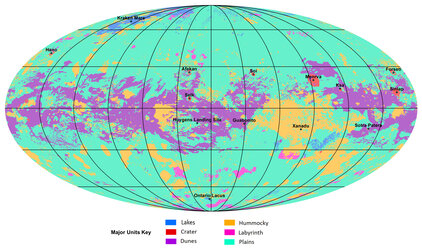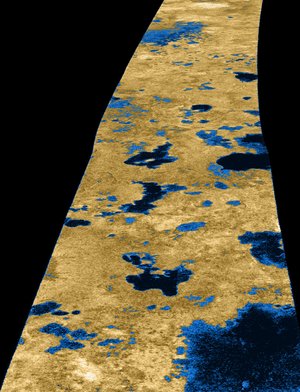Accept all cookies Accept only essential cookies See our Cookie Notice

About ESA
The European Space Agency (ESA) is Europe’s gateway to space. Its mission is to shape the development of Europe’s space capability and ensure that investment in space continues to deliver benefits to the citizens of Europe and the world.
Highlights
ESA - United space in Europe
This is ESA ESA facts Member States & Cooperating States Funding Director General Top management For Member State Delegations European vision European Space Policy ESA & EU Space Councils Responsibility & Sustainability Annual Report Calendar of meetings Corporate newsEstablishments & sites
ESA Headquarters ESA ESTEC ESA ESOC ESA ESRIN ESA EAC ESA ESAC Europe's Spaceport ESA ESEC ESA ECSAT Brussels Office Washington OfficeWorking with ESA
Business with ESA ESA Commercialisation Gateway Law at ESA Careers Cyber resilience at ESA IT at ESA Newsroom Partnerships Merchandising Licence Education Open Space Innovation Platform Integrity and Reporting Administrative Tribunal Health and SafetyMore about ESA
History ESA Historical Archives Exhibitions Publications Art & Culture ESA Merchandise Kids Diversity ESA Brand Centre ESA ChampionsSpace in Member States
Find out more about space activities in our 23 Member States, and understand how ESA works together with their national agencies, institutions and organisations.
Science & Exploration
Exploring our Solar System and unlocking the secrets of the Universe
Go to topicAstronauts
Missions
Juice Euclid Webb Solar Orbiter BepiColombo Gaia ExoMars Cheops Exoplanet missions More missionsActivities
International Space Station Orion service module Gateway Concordia Caves & Pangaea BenefitsLatest
Space Safety
Protecting life and infrastructure on Earth and in orbit
Go to topicAsteroids
Asteroids and Planetary Defence Asteroid danger explained Flyeye telescope: asteroid detection Hera mission: asteroid deflection Near-Earth Object Coordination CentreSpace junk
About space debris Space debris by the numbers Space Environment Report In space refuelling, refurbishing and removingSafety from space
Clean Space ecodesign Zero Debris Technologies Space for Earth Supporting Sustainable DevelopmentLatest
Applications
Using space to benefit citizens and meet future challenges on Earth
Go to topicObserving the Earth
Observing the Earth Future EO Copernicus Meteorology Space for our climate Satellite missionsCommercialisation
ESA Commercialisation Gateway Open Space Innovation Platform Business Incubation ESA Space SolutionsEnabling & Support
Making space accessible and developing the technologies for the future
Go to topicBuilding missions
Space Engineering and Technology Test centre Laboratories Concurrent Design Facility Preparing for the future Shaping the Future Discovery and Preparation Advanced Concepts TeamSpace transportation
Space Transportation Ariane Vega Space Rider Future space transportation Boost! Europe's Spaceport Launches from Europe's Spaceport from 2012
Global geologic map of Titan
Thank you for liking
You have already liked this page, you can only like it once!
The first map of the global geology of Saturn's largest moon, Titan, has been completed, revealing a dynamic world with dunes, lakes, plains, craters and other terrains. The map is based on data from the international Cassini mission, which performed more than 120 flybys of Titan during its time at the Saturn system, between 2004 and 2017.
With a size comparable to that of Mercury, this moon is the only planetary body in our Solar System – besides Earth – known to have stable liquid on its surface. But instead of water raining down from clouds and filling lakes and seas as on Earth, what rains down on Titan and fills its liquid pools is methane and ethane.
This hydrocarbon-based hydrologic cycle has been shaping Titan’s complex geologic landscape, giving rise to the variety of terrains shown in this map. These include plains, which are broad, relatively flat regions (shown in pale green), labyrinths, which refer to tectonically disrupted regions often containing fluvial channels (shown in pink), hummocky, corresponding to hilly terrains, featuring some mountains (shown in pale orange), dunes, which are mostly linear and produced by winds on Titan's surface (shown in purple), impact craters (shown in red), and lakes, currently or previously filled with liquid methane or ethane (shown in blue).
As evident in the map, different geologic terrains have a clear distribution with latitude, with dunes being most prominent around the equator, plains at mid-latitudes and labyrinth terrains and lakes towards the poles. The names of several surface features are indicated on an annotated version of the map, along with the landing site of ESA’s Huygens probe, which landed on Titan on 14 January 2005 as part of the Cassini mission.
To compile this map, scientists relied on a combination of radar, visual, and infrared data gathered by Cassini, in order to penetrate Titan’s thick and hazy atmosphere and identify surface features. The study, led by Rosaly Lopes of NASA's Jet Propulsion Laboratory and also involving ESA research fellow Anezina Solomonidou, enabled the scientists to estimate the relative age of different geological units, indicating that dunes and lakes are relatively young, whereas the hummocky or mountainous terrains are the oldest on Titan. The results were recently published in Nature Astronomy.
The map is in Mollweide projection and has a scale of 1:20,000,000.
The Cassini-Huygens mission is a cooperative project of NASA, the European Space Agency (ESA) and the Italian Space Agency (ASI).
-
CREDIT
NASA/JPL-Caltech/ASU -
LICENCE
ESA Standard Licence

Global geologic map of Titan (annotated)

Liquid Lakes on Titan

Organic compounds in Titan’s seas and lakes

Titan landscape and ‘seas’ viewed by Cassini's radar















 Germany
Germany
 Austria
Austria
 Belgium
Belgium
 Denmark
Denmark
 Spain
Spain
 Estonia
Estonia
 Finland
Finland
 France
France
 Greece
Greece
 Hungary
Hungary
 Ireland
Ireland
 Italy
Italy
 Luxembourg
Luxembourg
 Norway
Norway
 The Netherlands
The Netherlands
 Poland
Poland
 Portugal
Portugal
 Czechia
Czechia
 Romania
Romania
 United Kingdom
United Kingdom
 Slovenia
Slovenia
 Sweden
Sweden
 Switzerland
Switzerland
























